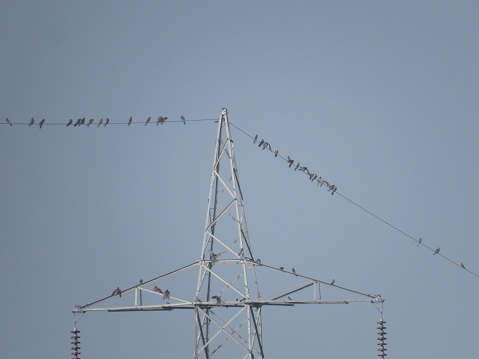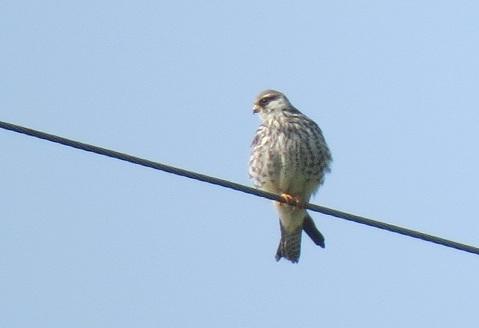About 600 Amur Falcons have been spotted at the Borigaon, Borbori and Nellie areas of Morigaon district during the last few days. The birds have been noticed roosting on power transmission lines or flying overhead. Local villagers are blissfully unaware of the presence of these long distant migrants amidst them. During 2001, members of Green Guard Nature Organization had recorded nearly 18000 birds near Morigaon which was unprecedented in Assam. Since then, only a handful of birds have been spotted in the intervening years, mostly near Amchoi, Morigaon. Tens of thousands are known to congregate at the Doyang reservoir in the Wokha district of Nagaland. The Doyang reservoir was in the news last year after the publication of a report detailing the massacre of around 120000 Amur Falcons, every week, for meat by the local hunters.
The Amur Falcons are small, slender raptors, with one of the most arduous annual migrations of any bird of prey. The Amur falcon annual migration route of over 22,000 kilometres includes an amazing transoceanic flight of over 3,000 kilometres during the outbound journey from Asia to Africa across the Indian Ocean. The entire population of Amur falcons leave the breeding areas in Eastern Siberia, Northern China, Mongolia, Manchuria and North Korea from late August to September, generally travelling in huge flocks. There are stopovers in India and Bangladesh for several weeks to fatten up and the arrival in North East India is attributed to the stopover period. The exact migration path is not well understood and the birds are presumed to fly continuously during the day and night to cross the sea, disappearing from India and reappearing in East Africa. The Amur falcon spends the northern winter in the southern Hemisphere, in sub-Saharan Africa from Malawi, Mozambique, Zimbabwe, Zambia and South Africa. Interestingly, the return journey from Africa to Asia, which takes place between February and March, is even less well understood, and is thought to take place overland via the Arabian Peninsula, with the birds arriving back in the breeding grounds in April and early May.
The publication of the report of the Doyang killings last year caused wide spread outrage and several initiatives have since been started to protect the Amur Falcon across its staging areas in India and Bangladesh. There maybe other areas where the birds are being killed, particularly in the Karbi hills of Assam and there is an urgent need to spread awareness for the conservation of this magnificent raptor.








Add new comment